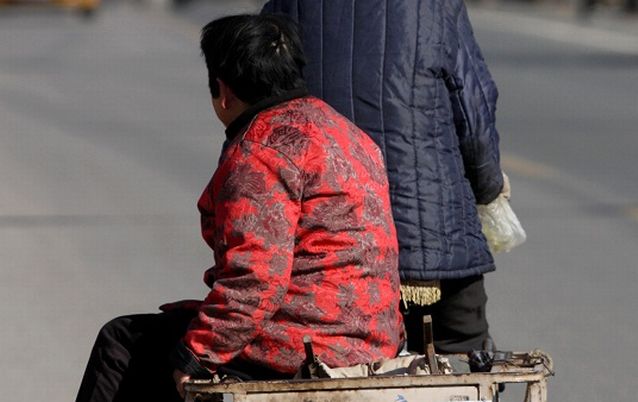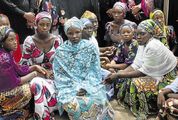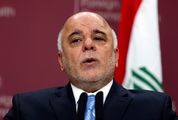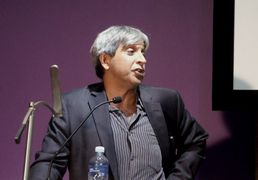ABOUT 100-million Chinese people live in extreme poverty, roughly 275-million on less than $2 a day. The overwhelming majority of China’s poor live in rural areas, and, for most, hope for a better life lies in the cities, where better-paying jobs are easier to find.
Indeed, over the past three-and-a-half decades, a staggering 500-million Chinese have already made the move, raising the urban share of the country’s population from less than 20% in 1980 to half today. By 2030, 70% of all Chinese are expected to live in cities.
China’s urbanisation has undoubtedly supported the country’s impressive growth and rapid economic transformation. Its cities have provided cheap land and abundant labour, while local governments have been eager to attract investment and create jobs.
But strains are starting to show. China’s growth model, driven by investment and exports, is running out of steam. Urban sprawl and congestion are spreading, fuelling unrest among farmers who feel undercompensated for the loss of their land — a vital source of collateral for local government debt, which now amounts to 30% of gross domestic product (GDP).
Moreover, the widening urban-rural divide has increased the country’s income and wealth disparities. Stark inequalities also exist within cities, mainly between those with a hukou (a record in China’s official household-registration system) and migrants without one.
Although migrant wages have now caught up, inequality in public services (access to which requires an urban hukou) ensures that this divide persists, risking migrant children’s lifetime prospects and welfare, and deterring future migration.
Environmental pressures are also worsening. Although some measures of urban pollution are improving, urbanisation exposes many more people to bad air, increasing the total human and economic cost.
The authorities are aware of these issues and have announced plans for a new, "people-oriented" urbanisation model that would be more efficient, inclusive, and environmentally sustainable. A joint report by the World Bank and the Development Research Centre of China’s State Council recently outlined how to make this plan a reality. Its successful implementation would undoubtedly improve conditions for the poor during China’s next phase of urbanisation.
First and foremost, the plan would reform land policies. Under China’s constitution, urban land is owned by the state and rural land by collectives. Though land reforms over the past three decades have recognised property rights for individuals and enterprises, rural land rights remain weak relative to legal conditions in urban areas.
By strengthening farmers’ property rights and restricting local governments’ power to expropriate land for urban growth, cities would become more compact and efficient, especially in terms of energy use. Reform would also help to consolidate farmland, facilitating better agricultural techniques.
Land reform would also help to spread wealth because stronger property rights boost rural land prices. According to one estimate, the total compensation farmers received for their land over the past 20 years was ¥2-trillion ($322bn) below market value, equivalent to 4% of China’s GDP last year. If invested at rates in line with China’s GDP growth, that unpaid compensation would now be worth some ¥5-trillion, or almost 10% of GDP.
Second, reform of the hukou system could increase labour productivity, reduce income inequality and accelerate urbanisation. Despite the high level of rural-urban migration so far, it is still below what could be expected given China’s size and income level. Preventing the one third of city dwellers who lack an urban hukou from accessing public services ultimately means that too many people who would have left rural areas remain tied to the land. This discourages people from seeking higher incomes in the cities, while keeping rural labour productivity and wages low.
While any rapidly expanding city experiences public-service bottlenecks, these can be overcome. As the World Bank-DRC report points out, China can do that by linking public services to place of residence rather than to place of origin. Moreover, when migrant children are able to join their parents in the cities and get a good education, the next generation will have a better chance to escape poverty too.
Making migration easier would not only open up opportunities in the cities; it would also accelerate agricultural transformation, as the fewer remaining agricultural workers would need to acquire new skills to raise productivity and wages.
However, to implement land and hukou reforms, China’s fiscal system must be overhauled. Stronger land rights for farmers will deprive city authorities of the land-conversion revenue needed to provide public services to new urban migrants. And more migration will mean more demand for those services.
Cities will therefore have to find new revenue sources. A property tax or a local surcharge on personal income taxes would target those who most benefit from urban living. Environmental charges and levies might also help, while simultaneously addressing urban environmental problems.
There are big potential savings to be gained, too. China’s cities are forecast to spend about $5.3-trillion on infrastructure over the next 15 years; but denser, more efficient cities would save about $1.4-trillion (15% of 2013 GDP) of these costs. This money could then help to finance the additional healthcare, education and low-income housing required by new migrants.
China’s citizens would benefit from a shift in government policy from the physical expansion of cities and infrastructure to the delivery of better, more fairly distributed public services. Achieving this would truly represent the people-oriented urbanisation the authorities seek to achieve.
• Hofman is chief economist for the East Asia and Pacific Region at the World Bank.
© Project Syndicate 1995–2014

MIRED IN POVERTY: Chinese in rural areas are finding it hard to eke out a living or move to urban areas. Picture: BLOOMBERG
ABOUT 100-million Chinese people live in extreme poverty, roughly 275-million on less than $2 a day. The overwhelming majority of China’s poor live in rural areas, and, for most, hope for a better life lies in the cities, where better-paying jobs are easier to find.
Indeed, over the past three-and-a-half decades, a staggering 500-million Chinese have already made the move, raising the urban share of the country’s population from less than 20% in 1980 to half today. By 2030, 70% of all Chinese are expected to live in cities.
China’s urbanisation has undoubtedly supported the country’s impressive growth and rapid economic transformation. Its cities have provided cheap land and abundant labour, while local governments have been eager to attract investment and create jobs.
But strains are starting to show. China’s growth model, driven by investment and exports, is running out of steam. Urban sprawl and congestion are spreading, fuelling unrest among farmers who feel undercompensated for the loss of their land — a vital source of collateral for local government debt, which now amounts to 30% of gross domestic product (GDP).
Moreover, the widening urban-rural divide has increased the country’s income and wealth disparities. Stark inequalities also exist within cities, mainly between those with a hukou (a record in China’s official household-registration system) and migrants without one.
Although migrant wages have now caught up, inequality in public services (access to which requires an urban hukou) ensures that this divide persists, risking migrant children’s lifetime prospects and welfare, and deterring future migration.
Environmental pressures are also worsening. Although some measures of urban pollution are improving, urbanisation exposes many more people to bad air, increasing the total human and economic cost.
The authorities are aware of these issues and have announced plans for a new, "people-oriented" urbanisation model that would be more efficient, inclusive, and environmentally sustainable. A joint report by the World Bank and the Development Research Centre of China’s State Council recently outlined how to make this plan a reality. Its successful implementation would undoubtedly improve conditions for the poor during China’s next phase of urbanisation.
First and foremost, the plan would reform land policies. Under China’s constitution, urban land is owned by the state and rural land by collectives. Though land reforms over the past three decades have recognised property rights for individuals and enterprises, rural land rights remain weak relative to legal conditions in urban areas.
By strengthening farmers’ property rights and restricting local governments’ power to expropriate land for urban growth, cities would become more compact and efficient, especially in terms of energy use. Reform would also help to consolidate farmland, facilitating better agricultural techniques.
Land reform would also help to spread wealth because stronger property rights boost rural land prices. According to one estimate, the total compensation farmers received for their land over the past 20 years was ¥2-trillion ($322bn) below market value, equivalent to 4% of China’s GDP last year. If invested at rates in line with China’s GDP growth, that unpaid compensation would now be worth some ¥5-trillion, or almost 10% of GDP.
Second, reform of the hukou system could increase labour productivity, reduce income inequality and accelerate urbanisation. Despite the high level of rural-urban migration so far, it is still below what could be expected given China’s size and income level. Preventing the one third of city dwellers who lack an urban hukou from accessing public services ultimately means that too many people who would have left rural areas remain tied to the land. This discourages people from seeking higher incomes in the cities, while keeping rural labour productivity and wages low.
While any rapidly expanding city experiences public-service bottlenecks, these can be overcome. As the World Bank-DRC report points out, China can do that by linking public services to place of residence rather than to place of origin. Moreover, when migrant children are able to join their parents in the cities and get a good education, the next generation will have a better chance to escape poverty too.
Making migration easier would not only open up opportunities in the cities; it would also accelerate agricultural transformation, as the fewer remaining agricultural workers would need to acquire new skills to raise productivity and wages.
However, to implement land and hukou reforms, China’s fiscal system must be overhauled. Stronger land rights for farmers will deprive city authorities of the land-conversion revenue needed to provide public services to new urban migrants. And more migration will mean more demand for those services.
Cities will therefore have to find new revenue sources. A property tax or a local surcharge on personal income taxes would target those who most benefit from urban living. Environmental charges and levies might also help, while simultaneously addressing urban environmental problems.
There are big potential savings to be gained, too. China’s cities are forecast to spend about $5.3-trillion on infrastructure over the next 15 years; but denser, more efficient cities would save about $1.4-trillion (15% of 2013 GDP) of these costs. This money could then help to finance the additional healthcare, education and low-income housing required by new migrants.
China’s citizens would benefit from a shift in government policy from the physical expansion of cities and infrastructure to the delivery of better, more fairly distributed public services. Achieving this would truly represent the people-oriented urbanisation the authorities seek to achieve.
• Hofman is chief economist for the East Asia and Pacific Region at the World Bank.
© Project Syndicate 1995–2014























Change: -0.47%
Change: -0.57%
Change: -1.76%
Change: -0.34%
Change: 0.02%
Data supplied by Profile Data
Change: -1.49%
Change: 0.00%
Change: -0.47%
Change: 0.00%
Change: -0.08%
Data supplied by Profile Data
Change: 0.48%
Change: 0.86%
Change: 0.28%
Change: -0.22%
Change: 0.93%
Data supplied by Profile Data
Change: 0.25%
Change: -0.21%
Change: 0.20%
Change: -1.22%
Change: -1.21%
Data supplied by Profile Data